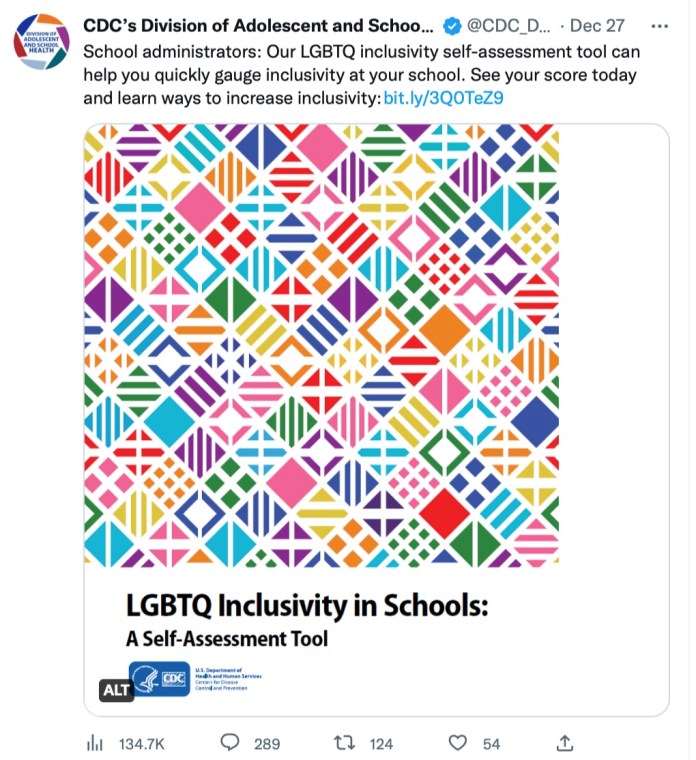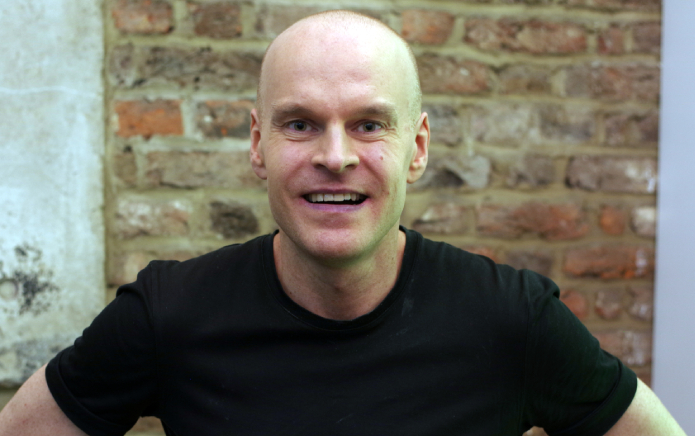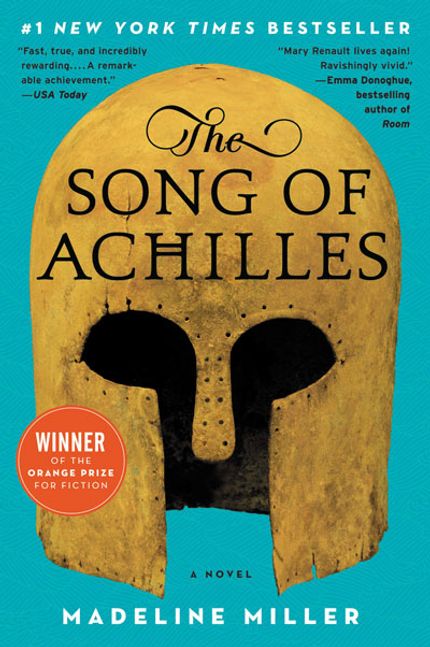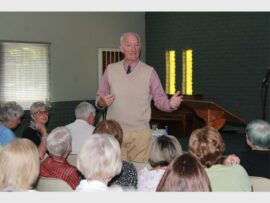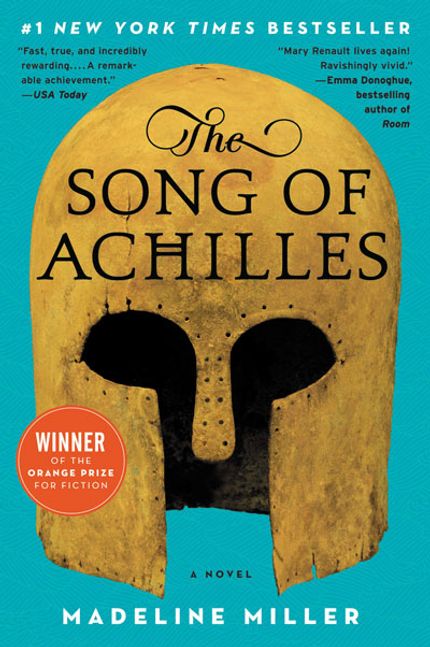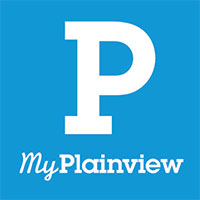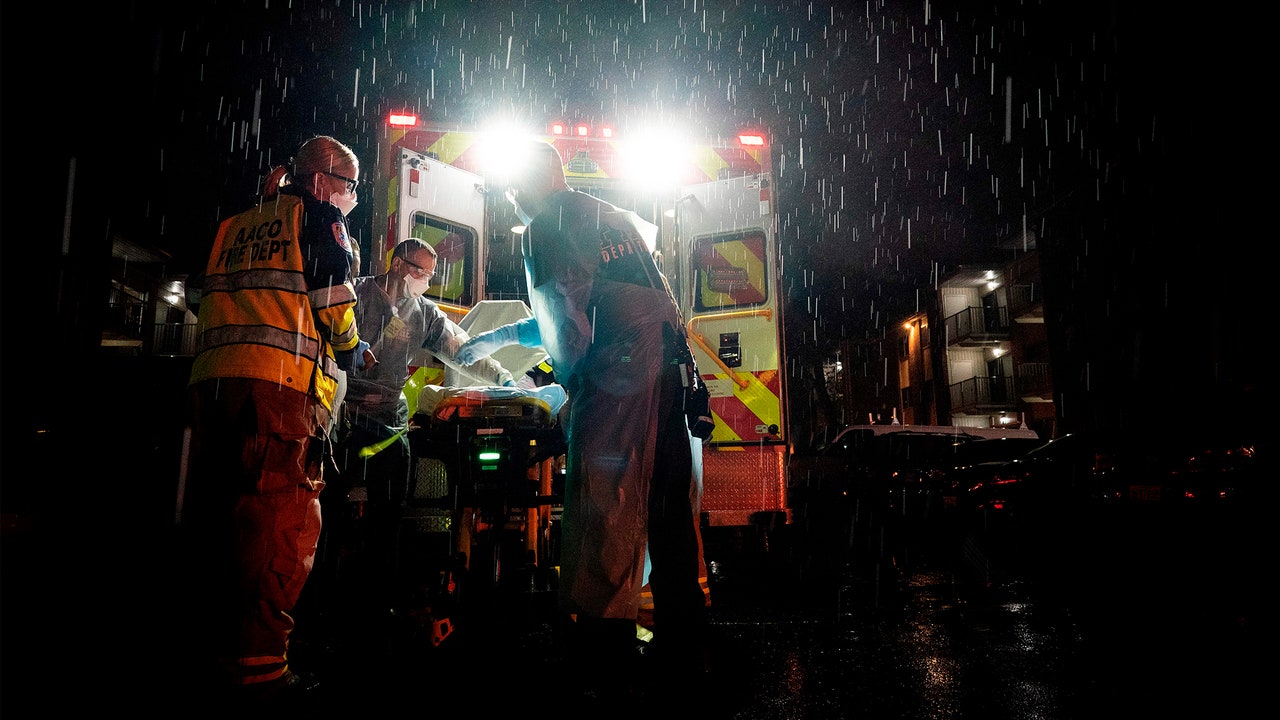By TYLER O’NEIL | THE DAILY SIGNAL
Just days after Christmas, the Centers for Disease Control and Prevention republished a “self-assessment tool” urging teachers, administrators, school health staff, and others to become an “awesome ally” by advocating for LGBTQ causes in school.
The document cites multiple LGBT activist groups, including a division of the Southern Poverty Law Center (SPLC).
The CDC did not respond to The Daily Signal’s request for comment about the document, which it originally published in October 2020.
“School administrators: Our LGBTQ inclusivity self-assessment tool can help you quickly gauge inclusivity at your school,” the CDC’s Division of Adolescent and School Health posted on Twitter on Tuesday. “See your score today and learn ways to increase inclusivity.”
The document, “LGBTQ Inclusivity in Schools: A Self-Assessment Tool,” appears on the CDC’s youth website in a section “For Schools” and under the drop-down “Tools for Supporting LGBTQ Youth.”
“Schools play a critical role in supporting the health and academic development of all youth, including the success of lesbian, gay, bisexual, transgender, and queer/questioning (LGBTQ) youth,” the document states. “Creating and sustaining inclusive school environments, policies, programs, and practices that include LGBTQ youth is one strategy for improving the health and academic success of all youth.”
The document notes that it includes resources from non-governmental organizations “focused on improving school inclusivity” and that the resources do not represent the CDC’s official opinion. The document further notes that the self-assessment tool is optional, not required, but it touts the document as “a focused, reasonable, and user-friendly approach to identify strategies to increase LGBTQ inclusivity in schools.”
The tool includes four assessments, one each for all users, administrators, educators, and school health services staff. The tool includes three scores: “Commit to Change,” “Beginning to Break Through,” and “Awesome Ally.”

The general self-assessment encourages education leaders to adopt certain mindsets, such as “I cannot assume a student’s gender, gender identity, or sexual orientation,” and urges them to adopt “inclusive” terminology, such as “using individuals’ chosen names/pronouns” and rejecting terms like “boyfriend” and “girlfriend” for “neutral terms” like “partner.”
It also encourages leaders to “advocate for LGBTQ inclusive and affirming materials in all school and classroom environments” and to participate in the school’s Gay-Straight Alliance.
This section also lists resources from activist groups such as GLAAD, the Human Rights Campaign, and PFLAG, along with the infamous “Gender Unicorn” graphic presenting biological sex as inherently different from gender identity.
The next section encourages administrators to alter their school health policies to include explicit anti-bullying and nondiscrimination policies for LGBTQ students, to allow “students to use the bathroom/locker room which aligns to their chosen gender,” to allow students to alter their paperwork “to present their chosen name and pronouns, rather than their legal name,” and to allow students “access to age-appropriate LGBTQ content and information.” It also encourages administrators to let teachers “develop LGBTQ inclusive curricula” and to support teachers attending LGBTQ trainings.The document also encourages
The document encourages educators to put up “visual labels” such as “rainbow flags, pink triangles, unisex bathroom signs” marking a classroom as “a safe space for LGBTQ students.” It urges them to teach with “LGBTQ inclusive” content and to attend LGBT trainings.
The document also urges teachers to “describe anatomy and physiology separate from gender (e.g., ‘a body with a penis’ and ‘a body with a vagina’).”
Finally, the document urges health services staff to set up “visual labels” to demonstrate support for LGBT causes in the school’s clinic, to offer intake forms with separate sections for “gender identity and sex at birth,” to use students’ chosen names and pronouns, to offer “LGBTQ-specific health pamphlets” at the school clinic, to “describe anatomy and physiology separate from gender,” and to attend LGBT trainings.
Read the rest of this story at The Daily Signal.

